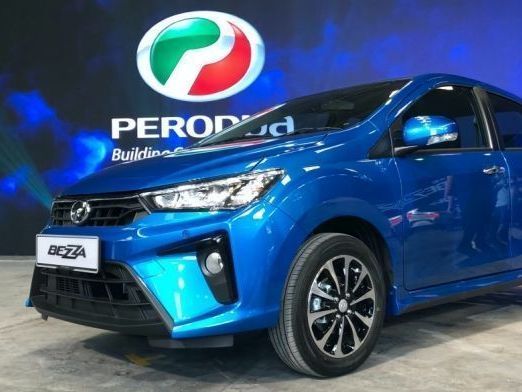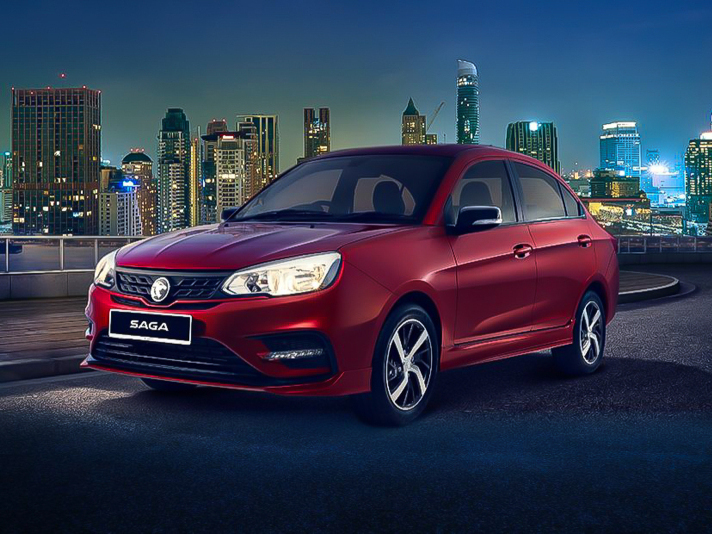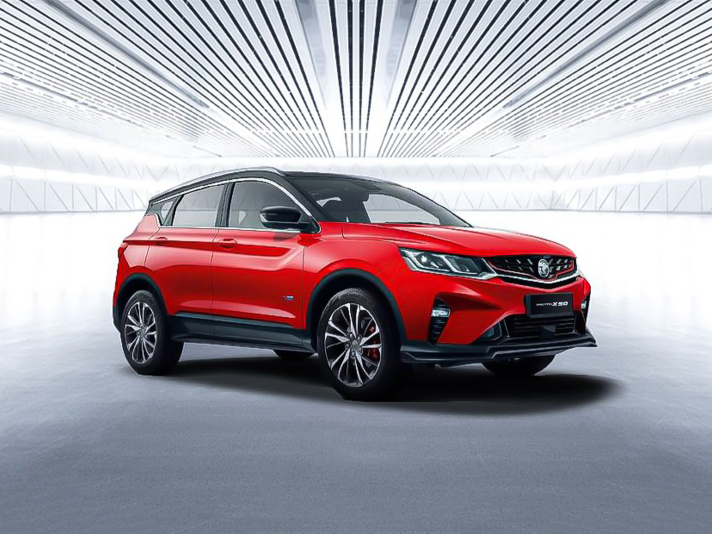BYD Launches Mass-Producible Highest Speed Motor, With a Maximum Speed of 30511RPM
 WilliamMar 25, 2025, 11:30 AM
WilliamMar 25, 2025, 11:30 AM
【PCauto】At a recent technology conference, BYD introduced not only its high-voltage charging technology of up to 1000V but also this high-speed electric motor ready for mass prodution, achieving a maximum rotational speed of 30,511 RPM.

It is the first production model capable of spinning at over 30,000 RPM. This speed significantly exceeds the industry average; for instance, the motors in Tesla Model 3/Y rotate at about 18,000 RPM, while the Porsche Taycan's motors reach 25,000 RPM.

The BYD motor, exceeding 30,000 RPM, outputs a power of 580 kW, nearing or even surpassing the power output of many supercar internal combustion engines. For instance, a Ferrari V12 engine typically has a power density of around 10 kW/kg, whereas BYD's motor boasts a power density of over 16 kW/kg, indicating it can deliver stronger power outputs in a more compact size.

With a power density of 16.4 kW/kg, this motor is the highest in global mass production. This means the motor can output more power at the same weight compared to others or be lighter while delivering the same power. This high power density design allows the electric drive system to be more compact, thereby freeing up additional space within the vehicle.

Additionally, the motor features a peak torque of 5,500 Nm and a maximum voltage of 1,500V. The high torque enables more rapid acceleration and a quicker start, while the high voltage enhances energy transfer efficiency and reduces energy loss.
Operating at 30,000 RPM, the rotor's linear speed approaches the speed of sound. Even the slightest imbalance can cause significant vibrations and noise, potentially affecting bearing life. BYD has managed to control dynamic imbalance to just 50 mg through high-speed shaping and precision balancing technologies, resulting in significantly lower vibrations during high-speed operation compared to the industry average of around 100 mg. This contributes to a better NVH (noise, vibration, and harshness) experience and more stable high-speed performance.
To meet the magnetic flux density and eddy current loss requirements for the 30,000 RPM motor, BYD employs N50EH high-energy magnets, which offer an 18% improvement in magnetic performance over the more common N48H magnets. Additionally, an optimized magnetic circuit design reduces eddy current losses by 44%.
BYD has increased the stator magnetic field saturation from 1.9T to 2.1T while utilizing a super-wide air gap design. This allows the motor to maintain high power output at various speeds, such as achieving 580 kW at 14,000 RPM and maintaining 524 kW at 30,000 RPM.
The motor combines 0.2 mm silicon steel sheets with a six-pole, 72-slot, ten-layer short pitch winding. Compared to the industry standard of 0.35 mm silicon steel sheets, BYD's design significantly reduces losses, ultimately resulting in a 21% reduction in copper losses, an 11% increase in peak power, and a 5 dB decrease in NVH.
BYD's ten-layer flat wire stator winding design is one of its innovative patents. This design increases the number of winding layers, enhancing the motor's power density and efficiency. Compared to traditional winding designs, BYD's ten-layer flat wire stator windings reduce total copper losses by 57% and increase peak power by 11%, significantly improving motor performance.
Typically, electric motor stators use silicon steel sheets that are 0.25-0.30 mm thick; however, BYD has reduced the thickness to 0.2 mm, combined with a bonding process that effectively lowers the iron core losses. The thinner silicon steel sheets reduce eddy current losses within the core, thereby improving motor efficiency. Moreover, the bonding process enhances the integrity and stability of the silicon steel sheets, further lowering core losses.
BYD's electric eddy current sensor features a lightweight design, a compact structure, and flexible layout, while also enhancing signal precision and reducing latency. This sensor operates without interference from power device frequencies and does not require a decoding chip, allowing it to handle rotational speeds of up to 480,000 RPM. Compared to traditional magnetic reluctance sensors, its precision has improved by 50% while weight has been reduced by 60%.
For the first time, BYD has introduced direct cooling technology using refrigerants into the electric drive system, leveraging the refrigerant's ability to reach lower temperatures. This results in a composite cooling technique utilizing oil, liquid, and refrigerant layers, effectively enhancing the cooling capacity of the electric drive system and maintaining the drive temperature within a reasonable range.
In high-temperature scenarios, such as multiple rapid accelerations, the electric drive's water temperature can quickly drop below 30°C, allowing the electronic motor to return rapidly to its optimal working temperature, achieving a 0-100 km/h acceleration time of 2.7 seconds. Furthermore, during enhanced pressure and self-heating scenarios, the thermal management system ensures the electric drive does not overheat.

The Han L is among the first models equipped with the 30,000 RPM motor, showcasing remarkable performance. It achieves a 0-100 km/h acceleration time of just 2.7 seconds (excluding launch time), with a tested top speed of 305 km/h. During the 0-100 km/h acceleration phase, the Han L rapidly reaches its target speed, and in the 100-200 km/h acceleration phase, it maintains strong power output, taking just around four seconds. Additionally, the Han L exhibits a unique feature of continuous launch capabilities without performance degradation, even after multiple rapid accelerations.

Similarly, the Tan L also features BYD's 30,000 RPM motor, delivering exceptional performance. Thanks to the robust power of the high-speed motor, the Tan L demonstrates excellent adaptability across various road conditions, easily handling frequent stops and starts in urban environments, as well as high-speed driving on highways.
If any infringement occurs, please contact us for deletion
Trending News

Proton X70 interior design fully revealed: Suitable for both home and business use
【PCauto】Proton X70, with its outstanding design, rich features, and affordable price, has quickly become a popular choice in the mid-size SUV market. As a C-segment SUV, the Proton X70 not only showcases modern and sporty aesthetics in its exterior, but its Proton X70 interior is also centered on "modern technology and comfortable experience," offering a high-quality driving environment.Whether for family users or business professionals, the Proton X70 can meet diverse needs. Next, we will compr

All-New Perodua Bezza Coming 2025: Built on Advanced DNGA Platform
html 【PCauto】Perodua has officially confirmed this year that it will launch a "fully redesigned model" (Full Model Change, FMC) within the year. FMC represents a comprehensive redesign of an existing model. Based on product life cycle analysis, among models like Axia, Bezza, Myvi, Alza, Ativa, and Aruz, excluding the relatively newer Axia, Alza, and Ativa as well as the seemingly shelved Aruz, Bezza and Myvi become the main candidates for a facelift.The Myvi underwent an update in 2023, while th

Proton Saga Interior Review: Affordable Yet Stylish for Everyday Use
【PCauto】The Proton Saga has been a household name in Malaysia since 1985. Known for its affordable pricing and reliable performance, it remains a top choice for budget-conscious drivers. As an A-segment sedan, the Proton Saga delivers strong value across key areas like comfort, safety, and everyday practicality. Whether you're commuting to work or heading out with the family, the Proton Saga interior offers just enough space and features to keep things simple and efficient.

Tesla Ordered to Refund $10,600 per Owner over HW3's Incompatibility with FSD Upgrade
【PCauto】 The California court has ruled against Tesla in a recent class-action lawsuit, ordering the company to pay $10,600 to some early owners who bought the Full Self-Driving (FSD) package. Tesla will also need to cover legal costs. The case was brought by owners who say the company never delivered the FSD features it had promised.

2025 Proton X50 Facelift: Major Upgrades & Possible 4-Cylinder Engine!
html [PCauto] The 2025 Proton X50 facelift is expected to hit the market in the third quarter. As Proton's core product in the B-segment SUV market, the new model will face challenges from competitors like the Honda HR-V. According to information, this facelift will feature comprehensive upgrades, particularly in design and powertrain, aligning closely with Geely China's Binyue L.To be modified based on the appearance of the Binyue LThe new front fascia will depart from the current mesh grille d
Popular Cars
Car Compare

